Read Reviews
The Best Outdoor Pizza Ovens
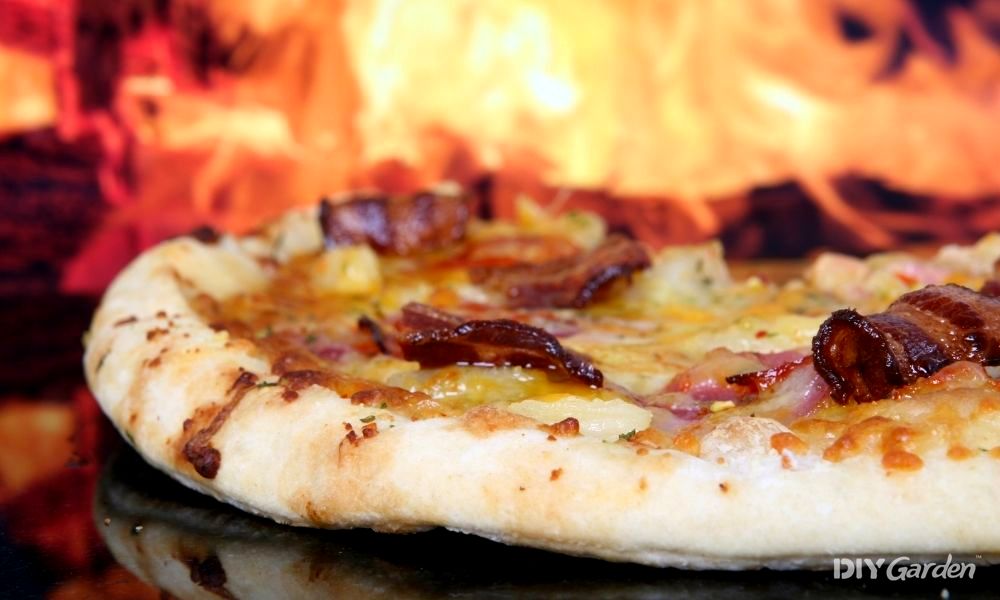
-
Best pizza oven - Ooni Fyra 12 Wood Fired Outdoor Pizza Oven
-
Best design features - ROCCBOX Gozney Portable Outdoor Pizza Oven
-
Best 16" pizza oven - Ooni Koda 16 Propane Outdoor Pizza Oven
-
Best budget option - BIG HORN OUTDOORS Pizza Oven
-
Best compact pizza oven - Pizzacraft PizzaQue PC6500 Outdoor Pizza Oven
-
Best accessory for existing BBQ - La Hacienda 56294 BBQ Pizza Oven
Outdoor Pizza Oven Reviews
1. Ooni Fyra 12 Wood Fired Outdoor Pizza Oven
Best pizza oven
- Cooks pizzas extremely quickly, generally in less than one minute
- Low maintenance - easy to both clean and run
- Logs fold in making it small and easy to carry
- Easy to assembly and get going - takes just 15 mins to reach temperature
- Weighs just 10 kg so can easily be taken to the beach or on camping trips
- No heat control - chimney can be adjusted to cool the oven down but it’s not very precise
- No pizza peel included
- Fuel Type
- Wood pellets
- Pizza Size
- 12"
- Max. Temperature
- 500°C
- Pre-Heating Time
- 15 minutes
- Weight
- 10kg
- Design
- 5
- Features
- 4.5
- Safety
- 4.5
- Value for Money
- 5
Gaining immense popularity in recent years, the Ooni Fyra 12 Wood Fired Outdoor Pizza Oven has fast become a family favourite. It’s fuelled by wood pellets and cooks evenly and efficiently; it only takes 60 seconds to cook a thin-crust pizza.
This portable pizza oven has a contemporary carbon-steel design and is small enough to be placed on table tops. It also weighs just 10 kg, and has foldable legs, making it immensely easy to transport. It can be taken to the beach, to a friend’s house, or on weekend breaks with ease.
This pizza oven has space to cook one 12” pizza, but it’s easy to cook pizzas in quick succession so it’s great for groups. The oven takes just 15 minutes to get up to temperature and then cooks pizzas extremely quickly, meaning everyone will be eating theirs at roughly the same time.
The Ooni Fyra pizza oven gets incredibly hot. It’s fuelled by hardwood pellets, and will reach around 500°C in 15 minutes. It’s easy to keep feeding the fire once it’s burning; the pellets are placed into the pizza oven’s hopper which means it’s simple to refuel whilst keeping your hands away from the flame. Once heated, this pizza oven is very low maintenance; approximately 300 g of wood pellets are needed per pizza.
The most important thing to keep an eye on is that you don’t overcook the pizzas – it’s easily done at the start, because the pizza oven is so hot. Leaving the pizza in for just 15 seconds longer than necessary can result in a burnt crust. Unlike gas pizza ovens, there’s no heat control, so you might need a bit of practice before you invite all of your friends over!
One other thing to bear in mind is the fact that a pizza peel needs to be purchased separately. There isn’t one included, and this tool makes removing the pizza from the oven much easier. Also, whilst there is a carry case available for this oven, it doesn’t come included.
Overall, this is one of the best pizza ovens on the market. It works extremely well, cooking evenly, efficiently and quickly, and doesn’t have any shortcomings in quality despite being so small and transportable.
Did you find this review helpful?
2. ROCCBOX Gozney Portable Outdoor Pizza Oven
Best design features
- Silicone jacket on the outside means there’s less hot, exposed metal
- Heats up in around 30 minutes
- Easy to set up - burner is easy to attach and it is all very clear and straightforward
- Pizza peel included
- Folding legs mean it can be taken to the beach or on camping holidays
- Reasonably heavy at 28 kg
- Fuel Type
- Propane
- Pizza Size
- 12"
- Max. Temperature
- 500°C
- Pre-Heating Time
- 20-30 mins
- Weight
- 28kg
- Design
- 4.5
- Features
- 4.5
- Safety
- 5
- Value for Money
- 5
Designed for ease of use and safety, the ROCCBOX Gozney Portable Outdoor Pizza Oven is a fantastic option for families. This portable pizza oven has a soft silicone jacket surrounding the metal oven which stays cool to the touch. Therefore, unlike many pizza ovens that become very hot on the outside, this model keeps reasonably cool. It can be used to cook pizzas up to 12” in diameter.
This pizza oven is very easy to use. It’s designed for cooks of all levels and will cook a homemade pizza in approximately 60 seconds. It comes with a pizza peel included and beginner chefs will surely appreciate the included pizza dough recipe.
Powered by propane gas, this pizza oven won’t produce the wood-fired taste of others on the market, but it still reaches a scorching 500℃. Also, a wood-burner accessory can be purchased separately if you want the authenticity of wood-fired cooking. However, the fact that this pizza oven is gas powered makes it very easy to use and it heats in around 30 minutes.
Another factor that makes this pizza oven simple to use, even for beginners, is the fact it has a built-in thermometer. This makes it clear when it’s fully heated and ready to start cooking! Plus, the pizza oven is essentially ready to go straight out the box. All you need to do is unfold the retractable legs, attach the gas burner and connect to some fuel.
This pizza oven is relatively portable, though not as light as the Ooni Fyra model. The ROCCBOX Gozney weighs 28 kg. It folds up small when the legs are in, and also comes with a strap with a carry handle, that can make it a little easier to pick up. There’s a pizza peel included too, so no extra purchases are required.
Overall, there’s a lot to like about the ROCCBOX Gozney, and I’d say it’s the best pizza oven for its design. It’s a low-maintenance, easy-to-use option and a good choice for beginners as well as those who are more experienced with cooking. Some of this pizza oven’s excellent design features include: the silicone jacket, easy-connect burner, included pizza peel, and the possibility to add a wood burner.
Did you find this review helpful?
3. Ooni Koda 16 Propane Outdoor Pizza Oven[ SAVE 11% ]
Best 16" pizza oven
- Can be used to make 16” pizzas as opposed to standard 12”
- Weighs just 18.2 kg so still very portable
- Cooks pizza very fast - ready in approximately one minute
- Heats up fully in around 20 minutes
- Adjustable heat means it can be used to cook other foods including bread and meat
- Large opening means it’s easy to retrieve pizza and cook other foods
- No pizza paddle included
- Fuel Type
- Gas
- Pizza Size
- 16”
- Max. Temperature
- 500°C
- Pre-Heating Time
- 20 minutes
- Weight
- 18.2kg
- Design
- 5
- Features
- 4
- Safety
- 4.5
- Value for Money
- 4.5
Many modern pizza ovens are limited to making 12” pizzas, but not the Ooni Koda 16 Propane Outdoor Pizza Oven! This pizza oven has space to make a 16” pizza, and comes with a 16” pizza stone included.
This pizza oven is gas powered which makes it exceptionally easy to use. It reaches temperatures of 500°C in approximately 20 minutes.
One of the best things about this gas pizza oven is that it can be used to cook other foods, as well as pizzas, like steaks, fish and vegetable dishes. The wide mouth opening allows you to fit larger food items easily inside and the adjustable heat dial gives more control over cooking. The pizza oven uses an L-shaped flame, at the back and round the side of the oven, helping to evenly cook food whilst only turning it once.
Assembly for the Ooni Koda is minimal, and the pizza oven is compact enough to sit on outdoor tables. It weighs just 18.2 kg, so it’s very portable and can be taken to friends’ houses, the beach, or on camping holidays.
It’s hard to fault this portable pizza oven, but one minor issue is that there aren’t any accessories included. Whilst this isn’t a deal breaker, others on the market generally come with at least a pizza peel and this isn’t the case with the Ooni Koda.
If you’re after a hassle-free, gas pizza oven, which isn’t limited to 12” pizzas, this is one of the best pizza ovens to consider. It cooks pizzas in approximately 60 seconds, and can be used for other foods too – perfect for general al-fresco dining! Also, another plus is that this pizza oven is still light enough to be transported, despite being a slightly bigger model.
Did you find this review helpful?
4. BIG HORN OUTDOORS Pizza Oven
Best budget option
- Takes just 18 minutes to reach the right temperature
- Reaches temperatures of at least 460°C
- Foldable legs allow this pizza oven to be taken to the beach or on weekend breaks
- Each pizza takes less than 2 minutes to cook once the oven has reached temperature
- Great value for money whilst still achieving good results
- No pizza peel included
- Slightly slower cooking time than more premium ovens
- Fuel Type
- Wood pellets
- Pizza Size
- 12”
- Max. Temperature
- 460°C
- Pre-Heating Time
- 18 minutes
- Weight
- 11.3kg
- Design
- 5
- Features
- 4
- Safety
- 3.5
- Value for Money
- 4.5
If you’re looking for a more affordable outdoor pizza oven, the BIG HORN OUTDOORS Pizza Oven is a great option to consider. This wood-burning pizza oven is a great choice on a budget, and can be used to cook pizzas up to 12” in diameter.
The pizza oven has a similar appearance to some of the more premium brands, with a contemporary metal body and foldable legs. It’s made from stainless steel, as opposed to carbon steel (which is what the Ooni Fyra pizza oven is made from) and has a loading hatch, as opposed to a hopper, for adding the wood pellets.
The foldable legs allow this portable pizza oven to be taken on the go, and it weighs just 11.3 kg so can be carried single-handedly.
It reaches temperatures of approximately 460°C, which isn’t quite as hot as the more premium models, but will still produce a perfectly-cooked pizza in under 2 minutes. Although it may cook marginally slower than more expensive ovens, this BIG HORN pizza oven still performs very well, offering good value for money.
The pizza oven heats up in just 18 minutes, and retains heat throughout use. The pizza will need to be turned whilst cooking, to ensure an even bake, but this is relatively easy thanks to the oven’s wide opening.
There are also several accessories included, which is another factor that makes this the best outdoor pizza oven to buy on a budget. It comes with an oven door and handle, removable fuel tray, ash tray, poker and 12” pizza stone. The only thing that’s not included is a pizza paddle and wood pellets, which will need to be purchased separately.
As you might expect for a cheaper model, this is a relatively basic pizza oven. There’s no casing to keep the exterior cool, no built-in thermometer and no fuel hopper. Nevertheless, it’s still a very good alternative to the more expensive, premium brands on the market, and capable of producing excellent pizzas.
Overall, this is the best pizza oven to buy on a budget.
Did you find this review helpful?
5. Pizzacraft PizzaQue PC6500 Outdoor Pizza Oven
Best compact pizza oven
- Stone only needs preheating for 15 minutes before it’s ready
- Comes with a 14” pizza stone included
- Adjustable temperature dial makes cooking easy to control
- Can be used for other food included bread, meat, fish and vegetables
- Slower cooking speed may appeal to some
- Pizza peel needs to be purchased separately
- Some assembly required - takes approximately 15 minutes
- Back of the oven is hotter than the front so pizza will need frequent turning
- Pizza takes longer to cook than many ovens on this list taking 4 - 6 minutes
- Fuel Type
- Propane
- Pizza Size
- 14”
- Max. Temperature
- 315°C
- Pre-Heating Time
- 15 minutes
- Weight
- 11.75kg
- Design
- 4.5
- Features
- 4
- Safety
- 4.5
- Value for Money
- 4
Finding a good compromise between pizza size and storage space, the Pizzacraft PizzaQue PC6500 Outdoor Pizza Oven is relatively compact yet still capable of making 14” pizzas. It measures 47.2 x 45.7 x 31.2 cm and weighs just 11 kg. It’s therefore a great portable pizza oven for those who don’t have much storage space but don’t want to be limited to 12” pizzas. A 14” pizza stone comes included.
This pizza oven is propane fuelled which makes it exceptionally easy to use. It doesn’t get as hot as most ovens featured on this list, with a max temperature of around 315°C. Cooking the pizza will take between 4 – 6 minutes.
The benefit of this is that it’s harder to overcook the pizza – you have a little more leeway than with some lightning-fast ovens. However, the back of the pizza oven becomes a lot hotter than the front, so the pizza will need regular turning.
Weighing 11 kg, this portable pizza oven can easily be taken on camping trips or other adventures, and it’s compact enough to place on any outdoor table. It’s also very efficient. Using one 20 lb propane tank, this pizza oven can operate for 25 hours – equivalent to over 250 pizzas!
Another great thing about this pizza oven is that it can be used for other food, including bread, meat, fish and vegetable dishes. The heat can be adjusted using the main dial to avoid overcooking.
There is a small amount of assembly required with this pizza oven and it takes approximately 15 minutes to put together.
Overall, this is one of the best pizza ovens if you want a beginner-friendly, compact pizza oven. It’s easy to store, yet can still cook 14” pizzas.
Did you find this review helpful?
6. La Hacienda 56294 BBQ Pizza Oven[ SAVE 18% ]
Best accessory for existing BBQ
- Great value for money and a good way to get more use out of an existing BBQ
- Compatible with both charcoal and gas BBQs
- Heats up relatively quickly, once BBQ is warm, in approximately 10 minutes
- Comes with an easy-to-read built-in temperature gauge
- Compact design is very easy to store and less bulky than other outdoor pizza ovens
- No integrated heat source - needs to be used on either a gas or charcoal BBQ
- No pizza peel included
- Doesn’t heat as fast as others on the market - need to wait for BBQ to heat up before use
- Fuel Type
- Gas or Charcoal
- Pizza Size
- 12”
- Max. Temperature
- Not listed
- Pre-Heating Time
- 10 minutes
- Weight
- 8kg
- Design
- 4
- Features
- 3.5
- Safety
- 4.5
- Value for Money
- 4
For a more versatile option, the La Hacienda 56294 BBQ Pizza Oven is the perfect solution for anyone who wants to do a range of al-fresco cooking on one unit. This pizza oven attachment can be placed on top of your existing BBQ, turning it into a pizza oven.
This BBQ pizza oven is essentially an insulated housing that is placed over a heat source. It has a removable stone base, which is where the pizza is placed, and is suitable for use with both gas and charcoal BBQs. Simply light the BBQ as usual, then place the BBQ pizza oven on top of the grill and allow it to heat up. Once heated, it can be used as a normal pizza oven. You’ll need a pizza paddle, or similar tool, to move the pizza around.
So, whilst not a pizza oven in the traditional sense, this BBQ pizza oven does a great job cooking homemade pizzas. The stainless steel construction offers good heat retention and there’s a temperature gauge on the top so you’ll know when to start cooking your pizza. It takes around 10 minutes to heat up.
Another benefit of this pizza oven is its portability. It’s very lightweight, weighing just 8 kg, and has carry handles so that it can easily be transported to friend’s houses or on weekends away. Of course, it’s also very compact, so can be stored easily with the rest of your BBQ equipment. There’s no assembly required, simply pop the pizza oven housing on the barbecue and allow it to do its job.
Although this isn’t in the same class as some of the other state-of-the-art pizza ovens on this page, it’s a great value option for anyone who already has a BBQ. It would be a good introduction to pizza cooking at home, and a really good way to get more use out of an existing BBQ. Of course, the downsides are that there’s no integrated heat source, and overall it will take longer to cook a pizza than it does with other pizza ovens on this list.
Overall, this is one of the best pizza ovens to buy if you already own a BBQ and want value for money.
Did you find this review helpful?
Compare Product Features
Use the dropdown to sort the table by the feature you want to see.
Ooni Fyra 12 Wood Fired Outdoor Pizza Oven
- 4.8
- Wood pellets
- 12"
- 500°C
- 15 minutes
- 10kg
ROCCBOX Gozney Portable Outdoor Pizza Oven
- 4.8
- Propane
- 12"
- 500°C
- 20-30 mins
- 28kg
Ooni Koda 16 Propane Outdoor Pizza Oven
- 4.5
- Gas
- 16”
- 500°C
- 20 minutes
- 18.2kg
BIG HORN OUTDOORS Pizza Oven
- 4.3
- Wood pellets
- 12”
- 460°C
- 18 minutes
- 11.3kg
Pizzacraft PizzaQue PC6500 Outdoor Pizza Oven
- 4.3
- Propane
- 14”
- 315°C
- 15 minutes
- 11.75kg
La Hacienda 56294 BBQ Pizza Oven
- 4
- Gas or Charcoal
- 12”
- Not listed
- 10 minutes
- 8kg
How to Choose The Best Outdoor Pizza Oven
When it comes to pizza, there’s no denying that shop-bought simply isn’t the same as homemade. But for that authentic homemade taste we all know and love, an outdoor pizza oven is definitely the way to go.
Not only do outdoor pizza ovens cook your pizza in a fraction of the time of your regular oven, they are a real crowd pleaser. In fact, there’s not much better on a warm evening than sitting outside with a few drinks and a homemade pizza (or four…!).
Everyone has their preferred type of pizza, so it’s important that your new pizza oven is tailored to your taste buds! Whilst some people like a thin and crispy crust, others prefer a thicker base. The best pizza oven should be able to accommodate a range of preferences – and deliver perfectly cooked pizza every time.
If you need a little help choosing the best outdoor pizza oven for you, check out the following tips to help you make an informed decision.
How Do Pizza Ovens Differ from Regular Ovens?
Understanding how pizza ovens work is key when it comes to making a great pizza. Pizza ovens differ from regular ovens, because they reach a much higher temperature – up to 500°C in many cases. This allows them to cook the pizza in just a minute or two, whilst producing a completely different taste and texture to pizzas cooked in a regular oven.
The problem with cooking pizza for longer, as you’d need to in a regular oven, is that it can dry out the crust, making it tough and chewy.
Another benefit of pizza ovens, and wood fired ovens in particular, is that the taste is far superior. As a result of cooking at very high temperatures, parts of the crust will caramelise (yum!), whilst the wood smoke also adds to the flavour. The toppings are also easier to cook. Toppings such as vegetables will become charred, whilst the cheese will bubble and caramelise.
Finally, because the temperature is so much higher in a pizza oven, the crust rises and becomes much larger. If you’ve been to a pizza restaurant and marvelled at the incredibly fluffy crusts, the secret is in the high-temperature pizza oven!
READ NEXT: Best Barbecue Smokers
Choosing the Right Fuel Source
When people talk about outdoor pizza ovens, they are usually thinking of wood-fired ovens. However, not all of the best pizza ovens are wood fired, and you’ll see from the products on this page that gas-powered ovens are also a viable option. The best outdoor pizza oven for you will depend on your cooking preferences.
Gas Powered
Gas pizza ovens are loved for their ease of use and efficiency. You simply need to turn them on, allow them to heat up and put your pizza in. When you’ve finished cooking your pizza, the oven can simply be turned off.
Gas-fired pizza ovens usually have some sort of temperature regulation, which allows you to adjust the gas burner and cook other foods too. When you can’t control the temperature, it may be too high to safely cook meat all the way through without burning the outside.
Gas pizza ovens are also cleaner than wood-fired pizza ovens. Wood-fuel ovens need to be cleaned out, and the ash disposed of. Gas-powered ovens can simply be switched off, and the pizza stone wiped clean once cool.
The main issue with gas-powered pizza ovens is that they aren’t as authentic. The gas burner won’t create that coveted smoky flavour, and it’s usually easy to tell whether a pizza has been cooked in a gas or wood-fired oven. Nevertheless, some gas-powered pizza ovens have wood-burning accessories which can be added on, allowing for a smokier taste.
Pros of Gas Powered Ovens:
- Easy to use
- Portable
- Not much cleaning after use
- Easy temperature regulation
Cons of Gas Powered Ovens:
- No opportunity to change taste by using different smoking woods – unless using an additional wood-burning accessory
- Generally a slightly less ‘authentic’ taste as there’s no smoke
Wood Fired
If you’re after authenticity, a wood-fired pizza oven is your best bet. The pizza takes on a unique taste and texture. Portable ovens tend to use small wood pellets as fuel. These burn reasonably slowly and are quite easy to light, although some people choose to use a blow torch. More on wood pellets in the next section. Full-size wood-fuelled pizza ovens use logs which can be a bit harder to get going.
Another reason to purchase a wood fired pizza oven is for the experience. Relaxing around a fire with your friends and family is a lovely way to spend a long summer evening, and it’s even better if you’ve got a pizza on the go at the same time!
A couple of downsides of wood-fired ovens. First, they are messier than gas ovens, given that the ash produced will need disposing of. Secondly, full-size wood-fired ovens can be quite a lot of work to get going. They’ll also be bulkier than gas-fired ovens as space is needed for the logs.
Pros:
- A party piece – very engaging
- Authentic method of cooking pizza
- Produces a smoky flavour
- Relatively easy to use
Cons:
- Require a lot of logs to keep burning
- Produce a lot of ash
- Hard to regulate temperature
- Generally quite bulky and large to accommodate log fire
Wood Pellets
Smaller wood-fuelled pizza ovens use wood pellets as opposed to logs. Ovens that use wood pellets will produce the same smoky flavour as wood fired pizzas, but they’re a bit easier to manage.
Wood pellet ovens are typically made from stainless steel which retains heat well. They are usually very portable, with a small compartment in which to load the wood pellets. There’s no need for bulky logs, and the pellets can simply be purchased online.
Pizzas can be cooked using a range of wood pellets. The variation in wood pellets can alter the taste of your pizza, so it’ll come down to personal preference. Cherry wood, for instance, will cook pizza with a deep smoky flavour, whilst applewood produces a flavour that’s lighter and more fruity. It’s also possible to use a mixture of wood pellets, opening up the opportunity to be creative.
Pros:
- Produce a wood-fired flavour
- A portable fuel method
- Easy to use
- Range of pellets to purchase which produce a different flavour
Cons:
- May end up using quite a lot of pellets; approximately 300g per pizza
Pizza Oven Size and Design
Choosing the Right Size
The size of the pizza oven will impact how many pizzas can be cooked at once. The ovens I’ve recommended, which are all portable, can only cook one pizza at a time. The advantage of this is that each oven is very compact, and the pizza cooks very quickly. With each pizza cooking in just a couple of minutes, you won’t feel as though everyone is eating separately – as you’ll be able to serve a pizza every minute or two.
The size will also impact the diameter of the pizza you can make. Most outdoor pizza ovens I’ve recommended come with a pizza stone included, and you won’t be able to cook a pizza larger than this stone. Portable outdoor pizza ovens usually come with a stone measuring around 12” in diameter, which is a medium size pizza. If this sounds a little small, opt for a pizza oven with capacity to hold a 14” or even 16” pizza stone.
If you’re going to be cooking other food in your pizza oven, such as large cuts of meat or fish, you should ensure that there’s enough space inside.
What’s the Best Design?
As we’ve already seen, there are a number of designs when it comes to pizza ovens:
Portable Pizza Ovens
Portable ovens are the best ready to go option. There’s usually very minimal assembly required, and they can be moved around when needed. They can be stored inside, taken to the beach or on weekends away. Despite the smaller size, they can still reach exceptionally high temperatures and cook a pizza in just a couple of minutes.
Tabletop pizza ovens are a real crowd pleaser. These can simply be placed on your outdoor table and they usually weigh between 10 – 20 kg. They often have foldable legs for easy storage and may even come with a carry case.
The downside to these ovens is that they only cook one pizza at a time. Whilst this is fine when there’s just a few of you, if you’re hosting a pizza party with a lot of people, you may spend all your time cooking (even if each pizza does only take five minutes or less).
Tabletop pizza ovens are usually powered by either gas or wood pellets. They heat up in around 20 minutes, although they do lose heat a lot quicker than large, brick ovens (which can be both useful and inconvenient).
Alternatively, you can buy a pizza oven accessory for an existing BBQ. These sit on your barbecue, and the interior is left to heat up. Once at the right temperature, the pizza is placed inside. The benefit of this is they’re very affordable and can help make the most of your current BBQ.
Freestanding Pizza Ovens
Freestanding pizza ovens look similar to freestanding Charcoal BBQs. They’re portable but freestanding. You won’t need space on your dining table, and they often have castor wheels for manoeuvrability. The downside is that they take up more space in storage than tabletop ovens, and are generally a lot heavier.
Permanent Pizza Ovens
Of course, there are also permanent brick or concrete ovens. These are great for parties and can be used to cook a range of foods, but they cannot be moved once installed. They require a lot of assembly, and can take a couple of hours to heat fully. Whilst these are the most authentic of outdoor pizza ovens, they require the most preparation and work to use. Another downside of a permanent pizza oven is that it needs to be ‘cured’ before use, which is a slow process.
Depending on size, a permanent oven may be able to cook more than one pizza at a time, or a larger pizza than a portable oven. These ovens also hold heat well, which make them a nice object to sit around during parties and gatherings.
Extra Accessories
Additional accessories can make certain aspects of using a pizza oven easier.
Let’s take a look at a few things you might need:
Pizza Stone
This is the most important item when it comes to pizza cooking. You must have a pizza stone in order to cook pizza. Most tabletop pizza ovens will come with a pizza stone included. The size of this is important, as this will determine the size of pizza you can cook. Ensure you know how best to clean your stone, as whilst some can be gently hand washed, others should never be allowed to get wet.
You should never put a hot pizza stone in cold water, and you should allow your stone to heat up in the oven – instead of putting it into an already hot oven.
Pizza Peel
A wooden or metal pizza peel (or pizza paddle) is an important piece of equipment. A pizza paddle is the best tool for quickly removing the pizza from the oven; these paddles can easily get under the pizza. Although other tools might work, it’s best just to use a pizza peel – even wasting a few seconds trying to retrieve your pizza can lead to it overcooking!
It’s important that your pizza paddle has a long handle so that you can retrieve your pizza without getting your hands too close to the oven.
Infrared Thermometer
If the oven doesn’t come with a built-in thermometer, using an infrared thermometer can measure the temperature at different places in the oven and let you know when to put in your pizza. You also won’t have to be anywhere near the fire yourself.
Silicone casing
Some tabletop pizza ovens will come with a silicone casing. The outside of a metal pizza oven can get exceptionally hot, which can be dangerous if there’s children or pets nearby.
Those with a silicone jacket are far safer to use and better for families. Although, of course, they’re still hot!
READ NEXT: Best Gas Barbecues
Outdoor Pizza Oven FAQs
Lighting a log-fuelled pizza oven takes both time and patience.
- Open both the door and the chimney smoke vent whilst you light the oven
- Place some kindling in the centre – a few small logs and kindling material
- Place firelighters in the middle of the kindling
- Light the firelighter and leave the match in the centre of the kindling
- Once the kindling is burning, add logs to the outside
- Patience is key! Wait until the pizza dome itself turns back with smoke and the firewood turns white
- Add more logs until the fire spans across the full base of the pizza oven
- Eventually, the inside of the dome will turn from black to white – use a laser thermometer to monitor the temperature
- Once the oven has reached 400°C (which should take around an hour) close the control vent on the chimney.
- Move any embers to the side and back of the pizza oven to make space for your pizza stone
- Your oven is now ready to use and should stay hot for around two hours
The process may depend on the type of pizza oven you have, so check the manufacturer’s instructions.
Pizza ovens reach extremely high temperatures, so it’s important that they are used safely.
Your pizza oven should be placed far away from any flammable objects such as washing lines, toys or outdoor cushions. Ideally, it should be over 3 m away from the entrance to your home. Don’t place your oven underneath a gazebo, parasol or covering.
This depends on the type of pizza oven. Tabletop pizza ovens such as Ooni ovens are designed to be used in both rain and sunshine, as well as wide variations in temperature.
Stainless steel pizza ovens won’t rust or lose heat when used in the rain, but if it’s windy you should be aware that rain can be blown into the cooking chamber and damage the interior. Pizza stones should never be allowed to get wet, so on windy days it’s best to cook a pizza in your indoor oven instead!
If you are determined to cook a pizza outside no matter the weather, you should make sure the wind is facing the back of your pizza oven, to prevent it from blowing the flames out of the back of the oven.
In bad weather, you may need to work harder to maintain the oven’s temperature, especially if you are cooking a few pizzas in a row.
To cook a pizza in a wood fired oven, you’ll need it to be at least 400°C. The pizza ovens I have recommended reach temperatures of around 450 – 500°C. This allows them to cook your pizza in just a couple of minutes, but you will need to be careful not to overcook it.
There’s a number of different types of wood pellets on the market which will give your pizza a different flavour.
Maple is one of the most popular options. This is used for meat, vegetables and bread, but it’s also great for pizza. If you’re a fan of Hawaiian pizza, maple wood pellets are your best bet as they create a slightly sweet aroma.
Oak wood pellets add depth and smokiness to your pizza. They also burn at very high temperatures so should help your pizza to cook faster.
Cherry pellets also produce a deep smoky flavour. These are great for lovers of pepperoni pizza!
Apple pellets are another popular choice. They are naturally sweet and fruity, but burn at very high temperatures which can shorten the cooking time.
Pecan pallets, as the name suggests, have a nutty and smoky flavour.
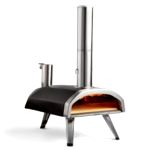
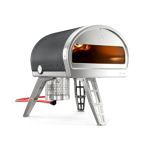
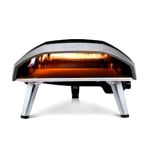
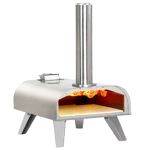
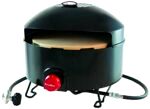
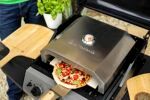
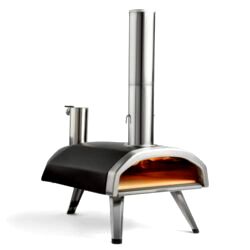
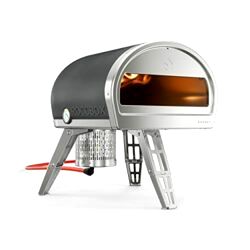
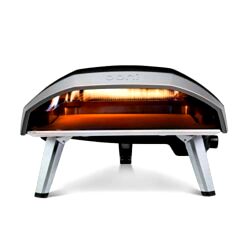
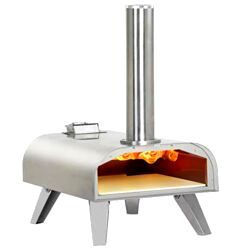
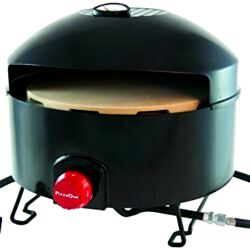
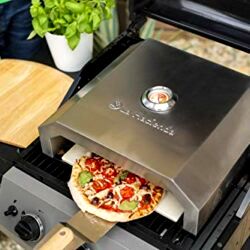
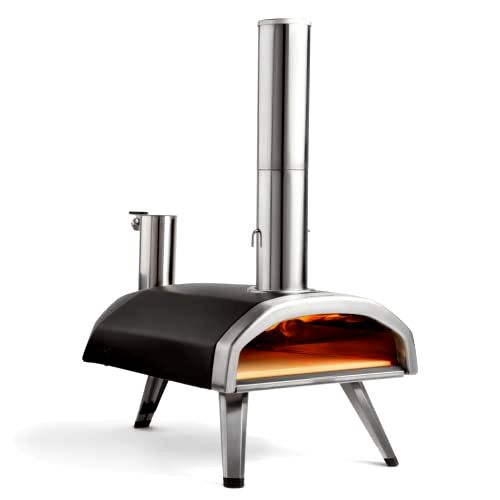
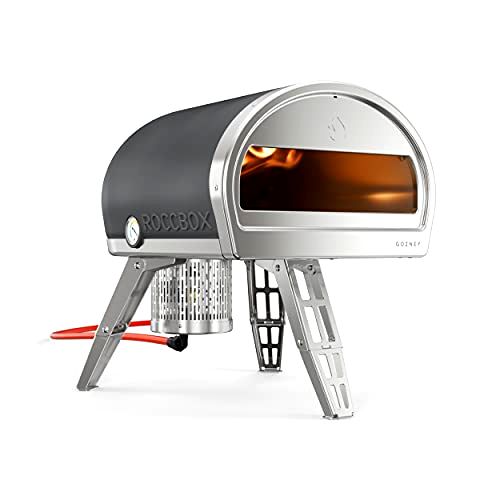
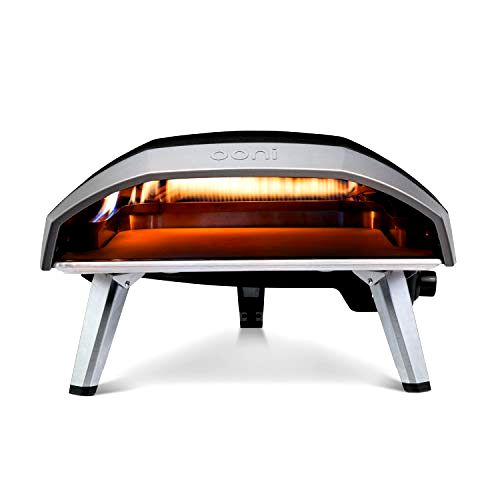
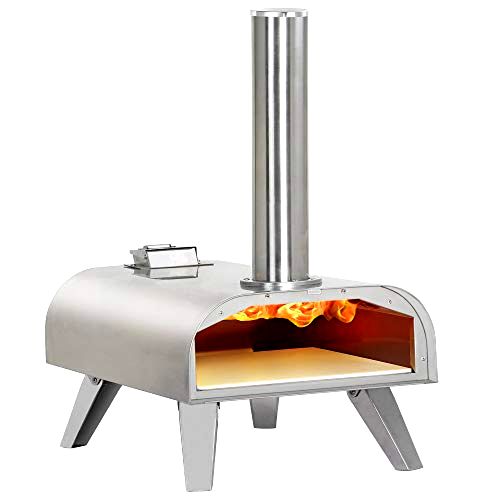
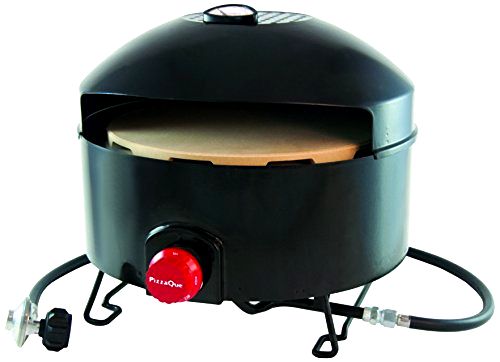
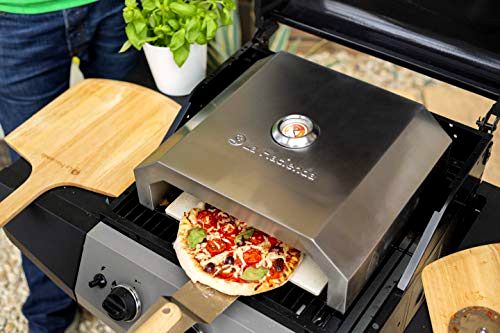

Share